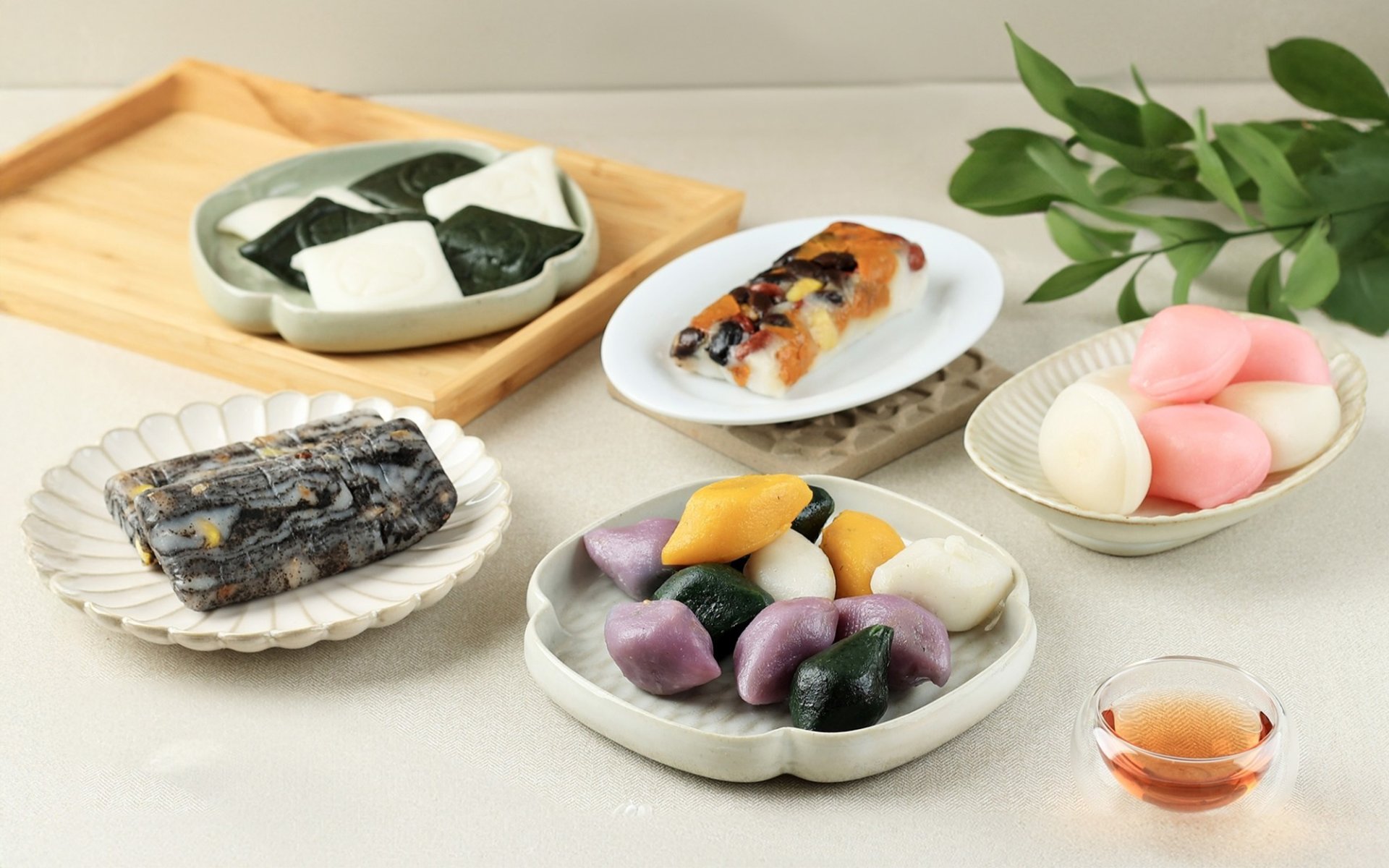Tteok

The Origins of Tteok in Korean History
Tteok is a traditional Korean rice cake made from rice or glutinous rice flour. With a chewy, sticky texture and mild flavor, it serves as a versatile dish that can be enjoyed in both savory and sweet forms.
Tteok in the Three Kingdoms Era
The earliest records of Tteok appear in ancient Korean texts from the Three Kingdoms period (Goguryeo, Silla, Baekje). Tteok at the time was made by washing and pounding rice into powder, shaping it, and steaming it. Royal recipes included flowers and herbs for both aesthetic and nutritional value.
Innovations in the Goryeo and Joseon Dynasties
During the Goryeo Dynasty (9181392), varieties like Baekseolgi and Injeolmi emerged. In the Joseon Dynasty, Tteok became a staple for celebrations such as weddings, birthdays, Seollal (Lunar New Year), and Chuseok (Harvest Festival), with Songpyeon symbolizing good fortune.
Tteok as a Social Connector
Traditionally, Tteok was made by families and neighbors who gathered during special events. This communal effort was not only a culinary task but also a means of strengthening social ties. While industrial production is more common today, many rural areas still preserve these customs.
Contemporary Varieties and Global Reach
Modern innovations include Gyeongdan (round rice cakes rolled in powders) and Garaetteok (long cylindrical Tteok used in Tteokbokki). Global K-culture popularity has led to Tteok being adapted in many creative ways, appealing to both traditionalists and new audiences alike.The Origins of Tteok in Korean History
Tteok is a traditional Korean rice cake made from rice or glutinous rice flour. With a chewy, sticky texture and mild flavor, it serves as a versatile dish that can be enjoyed in both savory and sweet forms.
Tteok in the Three Kingdoms Era
The earliest records of Tteok appear in ancient Korean texts from the Three Kingdoms period (Goguryeo, Silla, Baekje). Tteok at the time was made by washing and pounding rice into powder, shaping it, and steaming it. Royal recipes included flowers and herbs for both aesthetic and nutritional value.
Innovations in the Goryeo and Joseon Dynasties
During the Goryeo Dynasty (9181392), varieties like Baekseolgi and Injeolmi emerged. In the Joseon Dynasty, Tteok became a staple for celebrations such as weddings, birthdays, Seollal (Lunar New Year), and Chuseok (Harvest Festival), with Songpyeon symbolizing good fortune.
Tteok as a Social Connector
Traditionally, Tteok was made by families and neighbors who gathered during special events. This communal effort was not only a culinary task but also a means of strengthening social ties. While industrial production is more common today, many rural areas still preserve these customs.
Contemporary Varieties and Global Reach
Modern innovations include Gyeongdan (round rice cakes rolled in powders) and Garaetteok (long cylindrical Tteok used in Tteokbokki). Global K-culture popularity has led to Tteok being adapted in many creative ways, appealing to both traditionalists and new audiences alike.


